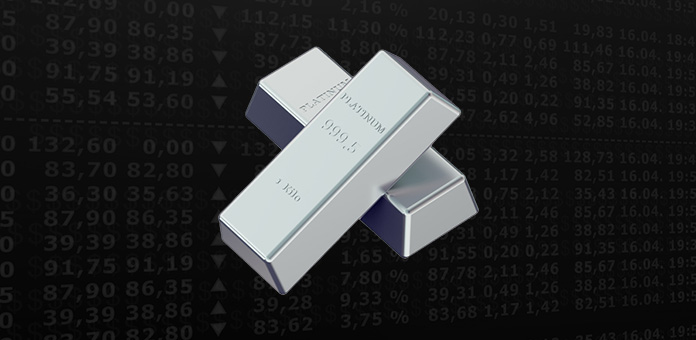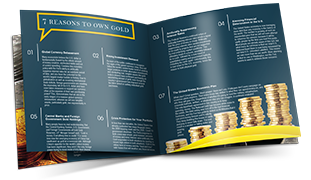
After years of being overlooked in the precious metals space, platinum is starting to make a comeback, in both price and investor attention. The white metal’s supply and demand dynamics have shifted significantly in recent years, and the long-term outlook is beginning to turn bullish.
Could platinum be one of the most underrated opportunities in the precious metals market today?
Platinum’s Potential Breakout
Platinum was once known as the “rich man’s gold,” regularly trading above gold throughout the 1980s and early 2000s. That trend held for decades until a reversal around 2011, when gold began to outpace platinum. In recent years, the gap has only widened as gold’s historic rally pushes to new highs, while platinum has remained relatively stagnant.
However, that may be changing. After spending years locked in a tight consolidation range between $900/oz and $1,000/oz, platinum prices have broken through long-term resistance. For the first time in over a decade, the metal has surged past $1,400/oz, marking a 40% jump in just a few weeks and fueling speculation of a potential breakout.
This rapid surge has pushed the white metal past its 200-week moving average and toward the upper limits of an ascending triangle, a technical chart pattern characterized by higher lows and a long-term resistance ceiling.
Platinum’s breakout of this triangle is a significant bullish signal, with many technical analysts highlighting the next resistance range between $1,550–$1,600/oz. This territory was last explored in 2014. A sustained close above this zone would represent a meaningful reversal of platinum’s years-long downtrend and may open the door to even higher platinum spot price targets.
Green Energy Still Benefits Platinum in Automotives
Platinum’s first major source of demand came from gas and diesel vehicles due to its crucial role in catalytic converters that help reduce harmful emissions. While some prematurely declared the rise of electric vehicles (EVs) as the death knell for platinum, the automotive industry remains the metal’s largest source of demand.
In fact, the auto sector has comprised between 29% and 42% of global platinum demand over the past five years.
Gas & Diesel Vehicles
The World Platinum Investment Council (WPIC) states that “autocatalyst demand for platinum is predicted to grow well into the decade.”
For both gasoline and diesel engines, increasingly strict emissions regulations are requiring higher platinum loadings per vehicle to meet government targets.
Electric Vehicles
Contrary to popular belief, platinum is still used in EVs, specifically those with fuel cells. These vehicles rely on the metal’s conductivity to make water out of air and hydrogen. As EV technology improves and the sector grows, experts project this side of the automotive demand, too.
Industrial Demand Remains Robust
Platinum’s utility in the green energy sector extends to wider industrial applications. In fact, the industrial sector has accounted for 27% to 36% of total demand since 2020. The white metal’s catalytic abilities are essential in producing nitric acid, a key ingredient in fertilizer. Additionally, platinum’s noncorrosive and highly durable nature makes it ideal for glass manufacturing and a variety of medical components.
One of platinum’s most innovative uses is in proton exchange membrane (PEM) technology, where the metal serves as a catalyst to split water into hydrogen and oxygen. This cutting-edge process produces green hydrogen, a clean fuel with zero carbon emissions. Though still in the early stages of adoption, this platinum-dependent technology is already used for power generation, heating, fertilizer production, and steel manufacturing.
Jewelry Consumption Continues Growing
The jewelry sector has accounted for up to 29% of total platinum demand over the past five years, and its share continues to grow. In 2024, platinum consumption from jewelry rose 8%, reaching approximately 1,993 koz, the highest level in six years. That growth continued into 2025, with first-quarter demand up 9% year-over-year (YoY), driven by gains across most major regions.
One of the biggest drivers of platinum’s jewelry resurgence is China’s shift away from gold, prompted by rising prices. In 2025, platinum jewelry demand in the world’s largest jewelry market is projected to increase by 15%. This upward trend is expected to continue. The WPIC projects a 2% annual growth rate in global platinum jewelry demand through 2028.
Investment Demand for Platinum Looks Healthy
Investment buying has been the most temperamental demand source for platinum, but beneficial prices and renewed safe-haven appetite—particularly among investors seeking alternatives to silver—point to a rising interest. In the past five years, this segment has ranged between -8% and 21% as a share of total platinum consumption.
In Q1 2025, global investment demand jumped by 28% quarter-over-quarter, extending to 461 koz. Platinum bar and coin purchases rose by 17% YoY, signaling a preference for physical assets.
In addition to leading in the jewelry sector, China spearheads the explosion in platinum investments with a 140% leap in under-500-gram bars. Looking forward, the WPIC predicts 688 koz investment demand for 2025, including a 30% climb in bar and coin purchases, with significant growth in China and North America.
Supply Falling From All Sides
While platinum demand steadily increases, supply is collapsing from numerous directions. Global platinum resources are anticipated to fall 4% YoY in 2025, declining to a five-year low of around 7.0 Moz. Here’s how the white metal’s constricting supply breaks down by source, one of the most compelling reasons to consider platinum now.
- Mining: Mining supply comprises nearly 80% of overall platinum production, boasting a significant impact on overall availability. Output fell by a staggering 13% YoY in Q1 2025, primarily due to issues in North American and South African operations. This output decline is expected to slip to 6% YoY for all of 2025.
- Recycling: The repurposing of above-ground platinum accounts for up to 28% of the overall supply, making it the second-largest source of available resources. Predictions for 2025 suggest platinum recycling will increase by a modest 3%.
- Above-Ground Stocks: Above-ground platinum stockpiles saw the steepest supply decline in 2024, dropping by 23%. That trend is expected to continue, with an additional 25% decline projected in 2025. At that pace, existing reserves would barely be enough to cover four months of anticipated demand.
Supply Chain Fragility Still Reigns
The platinum market’s dwindling supply is exacerbated by an increasingly fragile supply chain. South Africa alone manages more than 70% of the worldwide mine production. This geographic concentration acts as a bottleneck in global output, which has historically suffered frequent disruptions.
The region is no stranger to power outages, labor strikes, government issues, regulatory delays, and more. As a result, the platinum supply chain is highly vulnerable to even minor shocks, which can ripple across global pricing.
A Persistent Supply Deficit Emerges
The platinum market is facing a growing imbalance, as rising demand meets steadily shrinking supply. In 2025, this dynamic is expected to produce a supply deficit of 966 koz, deepening a shortfall that began in 2023. This systemic instability is one of the key factors influencing platinum prices right now.
According to the WPIC, these deficits are not temporary. Their projections extend through 2029, with the market forecast to run an average annual deficiency of 727 koz, roughly 9% of average yearly demand. This persistent gap between supply and demand underscores the structural tightness of the platinum market and reinforces the case for long-term price support.
Platinum supply remains highly inelastic, with few new mining projects and persistently weak recycling. As a result, even rising prices are unlikely to trigger a meaningful increase in supply, helping support the metal’s value despite short-term market volatility.


